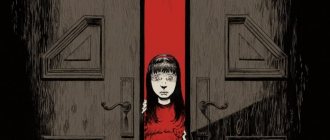Almost every person has phobias. A state is the fear experienced by a person towards a certain object, phenomenon or animal.
Phobias differ from ordinary fears by uncontrollable behavior. They trigger a range of complex physical and emotional reactions.
One of the common phobias is the fear of mice. Typically, people who are afraid of small rodents are also afraid of rats, hamsters and other mammals belonging to the group in question. Ways to combat the condition will be discussed in the article.
What is the fear of mice called?
Not only women, but also representatives of the stronger sex are afraid of rodents. Fear of mice and rats are different phobias. The same person can experience panic in front of rats and be absolutely calm about mice.
A phobia of rats is called zemmiphobia, while a fear of mice is called musophobia.
Zemmiphobia also includes fear of other large mammals: bats, moles. The listed species of animals are safe for people and many of the fears regarding them are unfounded. They are associated with watching television programs and horror films. Moles and bats do not threaten human health, but they can damage crops.
Signs and manifestations
Phobias can manifest themselves in different ways. It depends on the degree of their development in a person. Some may experience mild fear, while others may experience real panic. Physiological symptoms:
- dry throat
- tremor of the limbs,
- nausea,
- profuse sweating,
- desire to hide and run away,
- difficulty breathing,
- scream, cry,
- a feeling of unreality of what is happening.
At the sight of a mouse, the patient may begin to panic
How to get rid of fear
You can get rid of the fear of rodents at home, if the symptoms are not very pronounced. For this, viewing pictures of rodents or videos in which mice are the main characters are suitable.
Serious manifestations of fear require correction by a psychotherapist and the use of special medications . Let's look at the main ways to combat panic in front of rodents.
Visual therapy
To overcome a superficial fear of mice, viewing pictures or detailed study of information about them: their halo and structural features of rodents will allow you to overcome them. For a closer acquaintance with the animal, scientific and entertainment films and programs are suitable.
The best effect in fear therapy can be achieved by caring for a rodent at home. Pet stores provide a wide range of house mice that get along well with people and feel comfortable in captivity. Mice can become pets just like cats or dogs.
Important! A person who is afraid of mammals should force himself to look at them as often as possible. Residents of rural areas are much easier on mice, due to the fact that they see them much more often than city dwellers.
A person suffering from a significant phobia can take loved ones with him to the pet store. At the same time, you need to monitor the behavior of the object of your fear and imagine funny stories with their participation in your head.
If the phobia is significant, you should consult a psychiatrist. He will tell you how to stop being afraid of mice and rats.
Video
How to stop being afraid of rats?
Comparison of mouse and rat
A child may develop an unwanted fear of mice due to the violent reaction of adults to the sudden appearance of an animal. Most often, a person’s fears originate from childhood, when the psyche is not fully formed.
To eliminate musophobia, a comparative analysis can be carried out between mice and rats. The fear of rats is justified because animals cause real harm to humans: they not only spread infectious diseases, but also harm households. Mice are shy animals and will prefer to hide when they see the owner of the room.
External differences between mice and rats are also considered to reduce the intensity of fears of rodents. Often, aversion to mice is due to the fact that they are associated with rats, which have bare tails, huge teeth and bulging eyes.
Mice are very different in appearance from their larger relatives. They also cannot move along a vertical plane (walls, ventilation, telephone lines). A rat bite can lead to serious illness and a number of unpleasant consequences. A mouse can only bite if there is an immediate threat to its life.
Getting a domestic cat
Mice and rats try to avoid houses that have domestic cats. This fact can be used to eliminate signs of musophobia. Cats, especially those that walk outside, can quickly track down mice and destroy them.
There is another good way to stop being afraid of mice if there is no cat in the house. Instead of a repeller, you can use animal litter. Cat urine is also effective on rodents.
Origin of the definition of zemmiphobia
You may be interested in: Male psychopath: signs, behavioral characteristics, danger
Zemmiphobia (in other sources - zemmiphobia) stands for "fear of large mole rats." Some researchers have become interested in the question of what it is.
The popular version is the popular name for naked rats, which in appearance and behavior are practically no different from moles. The only difference is that on the front of their heads they have pronounced fang-shaped teeth, with which they dig underground tunnels. They live in groups in Africa. Each of these colonies numbers from 80 to 300 animals. Among them there is only one main female, and her males include 19 individuals. Other members of the colony perform work tasks or simply provide security.
But it has not yet been confirmed by significant evidence. Therefore, if it contains erroneous information, then science does not yet know where the word “zemmiphobia” came from.
Reasons for the development of the disease
Several factors can be identified that have a direct impact on the formation of musophobia.
Let's look at the main reasons why people are afraid of rats and mice:
- Genetic memory. People by nature perceive rodents as a potential danger. In ancient times, it was mice and rats that were carriers of dangerous diseases, from which entire cities and settlements died out. Despite the development of medicine, the fear of infection from rodents has not disappeared for most people.
- Disgust. The fear of mice is associated with animals living in landfills, basements and sewers - not the cleanest places. People associate contact with animals with contamination and the possibility of infection.
- Special appearance. In women, fear manifests itself due to the unpleasant appearance of rodents: bare tail and paws, large bulging eyes, large teeth.
- Negative experiences in the past. Subjects who have been bitten by a mouse or rat are more susceptible to musophobia. A child’s fear of mice can be caused by a negative attitude towards animals from parents or other relatives.
In some subjects, the sight of rodents causes very strong disgust , up to the appearance of a gag reflex. This condition is dictated by genetic factors and is aimed at protecting a person from infection. However, such a violent reaction to rodents prevents people from living peacefully.
The reason for the fear of rats and mice
Geneticists and scientists have found that the emergence of musophobia was provoked by the joint life of rodents and humans. At the beginning of their journey, people lived in caves in small groups consisting of several men and women. Each of them performed a specific role - men hunted and obtained food, guarding the rest of the group in their free time, and women prepared food, looking after children and the surrounding household. Times were not the easiest, so food was tight, and the mice living in the same caves mercilessly hunted for the remains of food. When they did not find her, they could bite sleeping women and children. Some of them could get dangerous diseases when viruses carried by mice were in their blood. In addition to this, one can imagine the dissatisfaction of hungry men who, upon returning, learned about a significant depletion of food supplies.
You may be interested in: Fear of mice and rats: what is it called, causes and treatment
You may be interested in:Algophobia - fear of pain: causes and methods of treatment
Therefore, it is no wonder that many women began to get hysterical from one type of mouse. This fear was so strong that it was gradually deposited in the genetic memory of humanity, beginning its journey from one generation to another. Therefore, many representatives of humanity to this day panic at the sight of a rodent.
In the case of rats, subconscious fear is spurred by an unsightly appearance - a bare tail, red bead-shaped eyes, large fangs, a nasty squeaky voice. People who panic violently at the sight of rodents believe in myths that they run through ventilation shafts, are able to move along telephone wires, and plan in detail an attack on a person. No less rare is the fear of a rat bite, which can infect someone with something unpleasant.
Women are afraid of mice
Wolves: Noble wolf vs Evil and terrible gray wolf / Shameful wolf
Rodents
: Brother rabbit • Rodents of unusual sizes • Hedgehogs and porcupines • Thrifty hamster • Rats (Sinister rat vs Good rat) • Guinea pig • Little mouse • Naughty squirrel • Hard worker beaver • Cowardly gray bunny
Cats
: Noble cat/Kawaii neko/Cool kitty vs Mischievous cat/Sinister cat (Cat of the villain) • Big cool cat vs Big scary cat vs Big dumb cat • Magic cats (Cats interfere with evil spirits) • Fat cat (Cat -hippopotamus) • Ship's cat • Clever cat • Red cat effect
Other cats
: Fast cheetah • Terrible tiger • Lion - king of beasts • Leopards and jaguars • Forest lynx • Black panther
Kunhas
: Slow-witted badger • Otters • Sable and marten • Sly
Ferret
Horses : Sinister Horse • Cool Horse • Not a Horse • Gypsy Nag • Playful Foal Pigs
:
Cute Piggy/Positive Boar vs Scary Pig/Piggy
Other Ungulates
: Lambs and Sheep • Hippos and Hippos • Terrible Rhinoceros • Timid Antelope • Dromedaries and Bactrians • Giraffe • Ominous Goat vs Little Gray Goat • Bison and Bison • Stupid Cow vs Brown Cow/Mighty Bull vs Fierce Bull • Beautiful Deer/Eared One • Donkeys • Striped Zebra • Elephants and Mammoths (Mega Elephant) • Llamas and Alpacas
The Bears
: Heroic Bear • Funny Teddy Bear • Clubfoot Misunderstanding • Bears are Scary
Other Bears
: Cute Panda • Polar Bear
Monkeys
: Heroic Ape • Evil Monkey • Cute Monkey • Primitive Primate • Gorillas and Orangutans • Monkeys • Baboons and Baboons • Smart Chimpanzee
Dogs
: Hell Hound • All Animals Are Dogs • Cute Dog vs Nasty Dog/Disgusting Mongrel • Beware, Evil Dog!
• Villain's Dog • Police Dog • Robot Dog • Dog is Man's Friend Other Animals
: Smelly Skunk • Heroic Dolphin • Killer Whale vs Good Whale • Red Panda • Pinnipeds • Cute Raccoon • Sneaky Hyena • Blind Mole • Terrible Bat • Cunning fox
Birds
: Noble birds of prey vs Creepy daytime predator • Cheerful tit bird • Sparrows • Geese-swans • Woodpecker • Creepy owl vs Wise owl/Sweet owl • Creepy birds • Funny parrot • Pouty turkey • Swallows and swifts • Cute duck • Cute penguin • Wise Raven vs Sassy Crow • Cock - Golden Comb vs Chicken - It's Funny vs Golden Chick • Pink Flamingo • Thieving Magpie
Arthropods
: Creepy Moth vs Beautiful Butterfly • Angry Flies • Cunning Scorpion • Squeaky Mosquito • Grasshoppers and Crickets • Centipedes • Ants and termites • Spiders of unusual sizes (Flock of spiders) • Correct and not so bees • Crustaceans of unusual sizes • Cockroach • Cicada
Reptiles and amphibians
: Toads and frogs • Man-eating crocodile vs Good crocodile • Slow turtle • Good snake vs Deadly snake • Tailed amphibians • Lizards
Other
: Cephalopods • Bivalves • Echinoderms • Jellyfish • Cute fish (Good shark) vs Scary little fish (man-eating shark • megalodon • voracious piranha) • Scavengers • Stingrays • Snails and slugs • Worm (Bloodthirsty leech)
Stereotypes
: Wolves - enemies of dogs •
Women are afraid of mice
• Hares are the enemies of wolves • Hares are the enemies of foxes • Hares eat carrots • Cats are the enemies of dogs • Cats love fish • Cat and mouse • Cats drink milk • Bears eat honey • Mice eat cheese • Hedgehogs eat apples • Monkeys love bananas • Dogs love seeds
Myth or truth
According to the latest data, this is just a myth. The claim that elephants are afraid of mice is also called an urban legend. This fact is widely popularized in cartoons, movies, books, comics and other media. There are several different versions of where it came from.
One of the simplest versions is to contrast the largest animal with a small mouse. Especially in cartoons it looks very funny when a huge elephant runs from a tiny mouse. This technique is used quite often.
There are still some misconceptions. For example, many people think that an elephant is afraid of mice because they can climb into its trunk and block its breathing. In fact, an elephant only needs to sneeze a few times for a mouse to fly out of its trunk.












